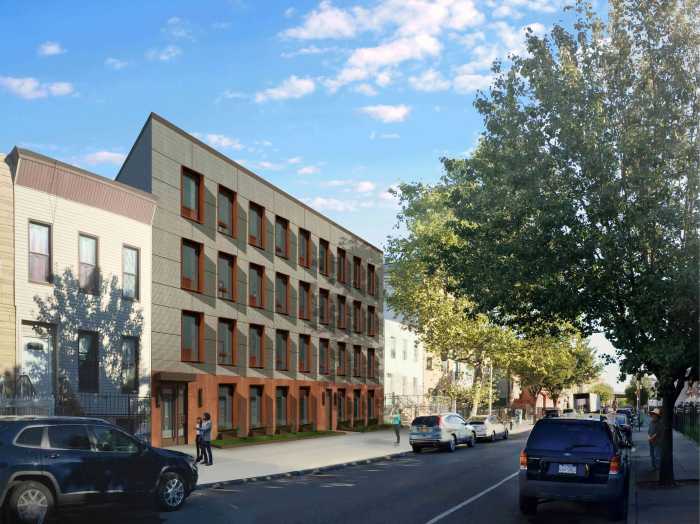The builders of the Brooklyn Bridge Park development shelled out more than $800,000 to tear down a building to make room for a grand public plaza — even though the city was fully intent on seizing the cleared land and delaying the park segment at least five years.
New details have emerged about a major snafu in the long-delayed waterfront open space and luxury condo development — and officials spent the week covering their tracks about how a much-ballyhooed segment of the Brooklyn Bridge Park development ended up being sidetracked by long-slated city Department of Transportation repairs to the Brooklyn Bridge.
This much is clear:
• In June, officials from the state-run Brooklyn Bridge Park Development Corporation promised that by fall, 2009, the site of the soon-to-be-demolished Purchase Building under the 125-year-old span would be a grand public plaza, possibly hosting a green market and ice-skating rink.
• The development corporation spent more than $800,000 to demolish the Purchase Building — all the while knowing that it did not have control of the property, which is owned by the city Department of Transportation.
• With the Purchase Building still being razed, city transportation officials announced that they would retain the land for bridge repairs that will take at least five years — even though the repairs are not even scheduled to begin.
Those repairs directly undermine the vision for the so-called Bridge Plaza described in Brooklyn Bridge Park planning documents, which describe the Purchase Building site as a major link between the northern and southern end of the park and condo development that stretches 1.3 miles along the DUMBO and Brooklyn Heights waterfront.
“The Purchase Building acts as a powerful barrier to unifying the northern and southern sections of the proposed park and achieving the full extent of the park,” the project’s environmental impact statement said. “By removing it, two parks will become one. In addition, its removal would allow for broad vistas of the Brooklyn Bridge’s stone piers as well as provide unencumbered views of the Manhattan Bridge in views north.”
Not anymore, thanks to the Department of Transportation’s disclosure that it needs the site.

“This is necessary safety work that has been planned for years,” said Transportation spokesman Seth Solomonow. “It can’t be staged elsewhere.”
He claimed that DOT is working with the state-run Brooklyn Bridge Park Development Corporation on a plan to share the land. But the project’s memorandum of understanding signed by the city and state calls for all open space to eventually become part of a future Brooklyn Bridge Park.
Like officials from the development corporation, Solomonow declined repeated requests for more details.
The park and condo development is proposed to cover 85 acres and will cost more than $300 million. Its soaring pricetag is not the only issue that critics have with the project, which also includes at least 1,200 units of housing in its footprint. The owners of the luxury units inside the park will be charged fees instead of taxes that will be earmarked to underwrite maintenance and operating expenses of the park — though the amount of commercial and residential development can increase if more funds are needed.
And now, the screw up over Bridge Plaza. Elected officials who have supported the development project are furious that the much-touted Old Fulton Street entrance to the park is in jeopardy because of the inter-agency turf war.
“This land was promised for parkland and that’s the way it should be,” said Councilman David Yassky (D–Brooklyn Heights).
“We all know how the bureaucracy works. A year turns into five years and then 10 years and before you know you can kiss that site goodbye.”


























